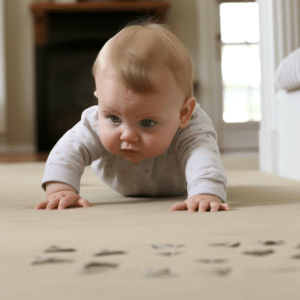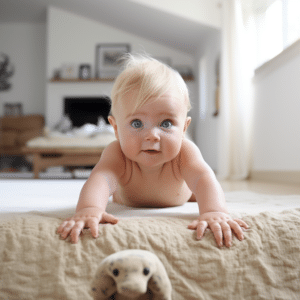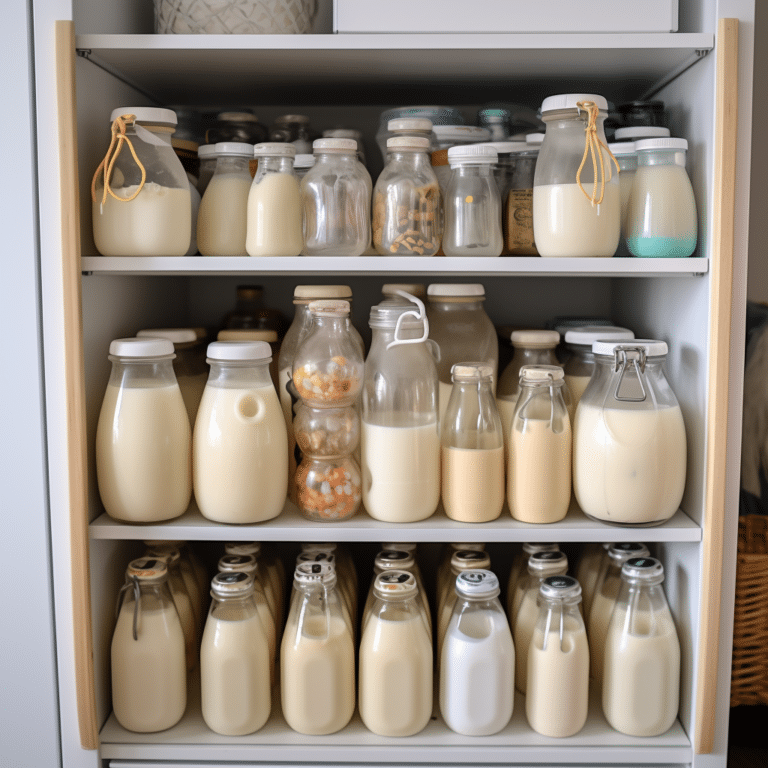Encouraging Baby’s Crawling Milestone: Tips and Guidance
Baby Crawling Milestone: If you’re like most parents, you’ll be amazed by your newborn and eagerly await milestones such as smiling, sitting up, crawling, and standing.
It may appear like your child will never be able to walk. However, before you know it, they’ll be climbing the couches and unlocking their baby gates.
You don’t have to train your child to crawl, thankfully. This is a normal developmental milestone that your baby will reach when ready. Even so, there are a few more things you should be aware of in order to encourage your baby to get moving. This includes things such as, “what’s the best surface for a baby to learn to crawl?” among others.

What’s the Best Surface for a Baby to Learn to Crawl?
A carpet is an awesome place for your baby to learn how to crawl. It creates a smooth surface for the baby to move around on. If you don’t have a carpet available in your home, you can use a rug instead. Blankets should not be used since they can clump up under the child as they move.
Is it Okay for Your Baby to Crawl About on the floor?
It is not acceptable to let your child crawl on the floor. This is because when your baby crawls across the floor, they can inhale four times the amount of dirt that adults do when walking across the same floor. When babies crawl on the floor, their noses and mouths are considerably closer to the dirt and microorganisms that are more concentrated on the floor.
How Can You Help Your Baby Learn to Crawl?
Because babies have an intrinsic need to move about, training them to crawl is more about providing opportunities for them to exercise Baby Crawling Milestone the abilities they’ll need. Below are five things you can do to assist your baby to learn how to crawl:
Allow Plenty of Tummy Time for Your Baby
Babies should always sleep on their backs. However, it is beneficial to allow your baby some tummy time when awake. When a baby spends some time lying on the stomach, they try to raise their head off the ground. This strengthens their back and trunk and allows their limbs to move freely. Both of these activities aid in the development of the muscles required for crawling.
Tummy time is a favorite pastime for some babies. If your child cries or resists, consider only doing it in small bursts for a few minutes each time. You may also make floor playtime more enjoyable by allowing them to spend a few minutes in various positions, such as on their sides, tummies, and backs. Lastly, try a bonding tummy to see their face as they try elevating their head.
Reduce the Time Your Baby Spends on Strollers, Swings, and Bouncers
It may take longer for babies who spend less time on the floor to gain the strength they require to crawl. Even though baby walkers, bouncers, swings, and other seats are essential for keeping a baby safely confined, allowing your baby to move around on the floor encourages exploration and movement.
Motivate Your Baby
As previously stated, babies have a natural desire to move, but you can make it a bit more interesting by offering them an item to reach for.
Consider placing their most favorite toy on the floor during tummy time but just out of reach. This will capture their interest and provide them with an objective to strive for while they attempt to move. Another trick is to place a mirror in front of your child on the floor. When babies see themselves in the mirror, they may be motivated to scoot and eventually crawl to the object.
Babies will most likely use alternative tactics to get at the toy, such as stretching and rolling. You may find it difficult to refrain from assisting them, but if you resist the need to bring the toy closer, you’ll be astonished at how patient your baby can be as they try to solve the problem on their own.
Create a Comfortable Environment for Your Baby to Explore
Make a play area for your baby on the floor with interesting toys and objects they may safely explore. Remember to install a carpet on the floor, as previously stated. This will help with the dust and create a smooth surface for the baby to move around on.
Crawl Around With the Baby on the Floor
If you or an older sibling joins your baby on the floor during tummy time, the baby may begin to crawl sooner. Even if your baby sees their Baby Crawling Milestone favorite toy from a distance, the truth is, they may not know how to start scooting and crawling. If you teach them what to do, they may crawl towards the object by imitating your movement.
What Does it Take to Learn to Crawl?
Like other motor skills, crawling is more complicated than it may seem.
While it may appear that moving around is a rather basic activity for a baby, your child requires the development of two crucial abilities. A baby must first build muscular strength to support themselves on their legs and arms. Second, the baby must be able to coordinate all of their limbs’ movement to move.
Should You Be Concerned About Your Baby’s Inability to Crawl?
There is a wide window for when a baby should start crawling. It’s also worth noting that some babies never crawl. Besides, they progress from sitting to standing to walking.
You probably don’t need to be concerned about your baby’s movement. However, if you observe that your baby is attempting to move but only using one side of their body, you should consult a pediatrician. If you’re also concerned that your baby’s ability to move around isn’t improving, you should also consult a pediatrician. A pediatrician can check to see if your baby’s development is on track.

Conclusion
Baby Crawling Milestone: A carpet or rug is the best surface for your baby to learn to crawl on. Babies should not crawl on floors since they are likely to inhale much dust. Some floors are also rough, making it difficult for a baby to learn to crawl on them.
If your baby has not yet started crawling, you probably don’t need to be worried. There is a wide window for when a baby should start to crawl, and also, not all babies crawl; some progress from sitting to standing to walking.






